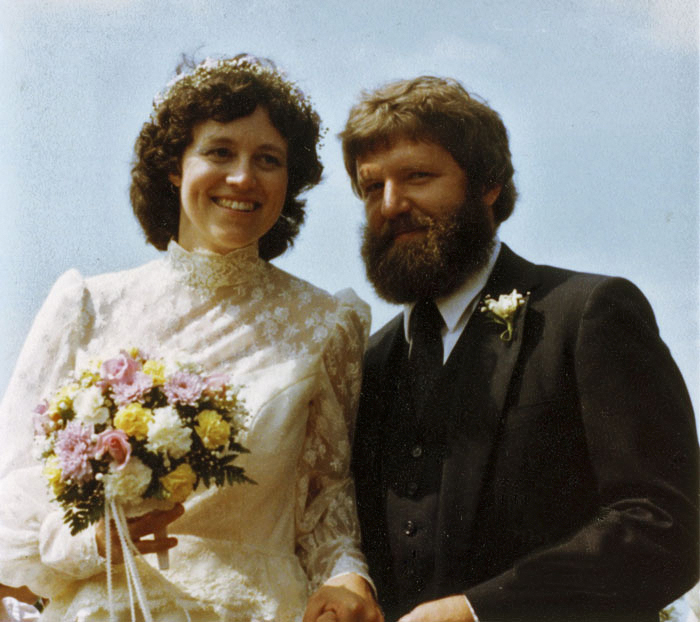Self Compassion, Acceptance and Forgiveness
By Wayne Dodge and Gwen Ewan. Gwen and Wayne’s program Self-Compassion: Making Friends with Yourself runs in November.
The model of Self Compassion that we teach at The Haven specifically describes the steps towards encouraging and nourishing a process that supports self acceptance and compassion.
Starting with being embodied (Breathe!), you bring your Awareness of your Self forward by Acknowledging it to someone else. In doing this over and over, you actually create a larger space that contains yourself as you really are – Authentic, Ideal and Actual all mixed together. This process allows for the possibility of Acceptance – the understanding and taking responsibility for all that you are. Acceptance is an essential component of Self Compassion.
Many people think of self-acceptance as being the same as self-forgiveness; that to move into self-compassion you must “Learn to forgive yourself, again and again and again and again…”[1. Sheldon B. Kopp. If You Meet the Buddha on the Road, Kill Him! (Palo Alto, CA; Science and Behavior Books, 1972) p 167.] However, we see subtle, yet important differences between Acceptance and Forgiveness. Acceptance is the deep knowledge that ‘I am who I am’ and ‘I’ve done what I’ve done’ – not just the bad, but the good and indifferent as well. It is the understanding of our nature and history as that of a fallible, but intrinsically worthy human. Forgiveness usually involves a splitting of the self into a ‘forgiver’ and the ‘forgiven’; it is a form of treating the self as Object – one ‘good’ and one ‘bad’.
Before we can discuss those differences further, it would help to talk about the differentiation between Power and Strength. Power is “the state of having control over other people or things”[2. B. Wong and J. McKeen. The (New) Manual for Life. (Gabriola Island, BC; PD Publishing, 1998) p 63.] Power positions are recognizable whenever the fundamental flavor of an interaction is that of control. This includes not only ‘real’ control – such as the power a judge has over a prisoner in the docket – but also perceived control – the control the prisoner may believe that he, his lawyer, or the rule of law has over the judge.
In addition to control and objectification, the power position is associated with security, charge, taking care of others, and field dependence. In addition to vulnerability and being personal, strength is associated with insecurity, caring about others, and field awareness. Not that we think that control, objectification security etc are to be scorned – they are all positions that we all take regularly and are helpful to us. The question is whether we are willing to be aware of where we on the power – strength continuums at any given point and determine if where we are at is serving us. Wong and McKeen[3. The (New) Manual for Life. op. cit. p 74.] state:
… strength enhances being, awareness, compassion, growth and life. Power – along with its obvious advantages of achievement, security, status, and control – is associated with non-being, unawareness, fixation, self-hatred, stagnation, and (spiritual) death.
As we are able to integrate all aspects of ourselves (Authentic, Actual and Ideal) we move towards integration. In that place, instead of moving between the extremes of strength versus power (the ‘Either/Or’ stance), we are more able to see one polarity as foreground and the other as background at any one time (the ‘And’ stance).
Let’s return to the issue of Forgiveness and Acceptance.
Webster’s dictionary[4. Webster’s Seventh New Collegiate Dictionary (Springfield Mass, G&C Merriam Co, 1967).] defines Forgiveness as: Forgive…
1: to cease to feel resentment against (an offender): PARDON (~ one’s enemies) 2 a: to give up resentment of or claim to requital for (~ an insult) b: to grant relief from payment of
Forgiveness is therefore focused on the other (offender, enemy, debtor) as well as requiring some action on your part (cease, give up, grant). As you can see, the definition of forgiveness has to do with a power relationship in conflict – and the re-balancing of that power. An offense has occurred; the offended (victim) has had something ‘taken’ from them by the offender. Often what has been ‘taken’ is their sense of dignity or self-worth or their sense of safety.
We would like to interject here that we do not believe that your dignity, self worth or safety can be taken away by someone else. These are your own internal constructs (internal thoughts and beliefs) and your responsibility. Although it often feels like someone has this power over you, if you examine what happens closely you will see that YOU are the one experiencing less dignity, lowering your estimate of self worth or feeling less safe in response to the action of the Other. However, the judgment that the Offender has done this to us is such a common interpretation that it is worth exploring. If you disagree with this position, please continue to read on and see how what we discuss fits, or doesn’t fit, with your experience and understanding.
The Offended may perceive that their dignity/self worth may have been injured by an insult or slight. We all have certain ‘trigger words’ (‘fat’, ‘stupid’, etc.) to which we are more reactive than others. If a friend uses such a trigger word, even if that person has no knowledge that you have such sensitivity to that word and even if the word is used in ‘good natured’ teasing, you are likely to feel hurt and/or offended. We somehow feel better when our friend, finding out about our hurt, offers an apology and asks forgiveness. This somehow ‘evens the score’. A balance has been re-established.
Such an offense can also rock our illusion of safety. “I thought I knew him so well; how could he have said that to me.” The apology and forgiveness helps to move you back into the comfortable illusion of safety. “I guess he’s not the sort of person who would actually say that to me” (Even though he, in fact, did say it to you.). Remember that the sense of safety and control are maintained by roles and hierarchy – basic Power positions. The offense upsets the Power balance; the apology and forgiveness re-establishes the balance.
Remember that there is nothing wrong with a Power position. It is a very human stance and has its uses. Power is the method we use to attempt to control the environment around us and get what we think we want or need. It is also the way in which much of the world works – and to get along in the world it is very useful to be familiar with and know how to use power. The up side of operating from a Power position is that we get to live in the illusion of control. We don’t have to take minute by minute responsibility; we believe we know how everything will turn out. The attraction of Forgiveness then is to reinforce this illusion.
There are two major downsides of staying in power mode and using Forgiveness. First, it is distancing from the other. The focus is on the ‘damage’ done to us and what the appropriate recompense is for that injury. There is little, if any, interest in the other person’s experience (the why they did what they did and how they felt) except for how much they’ve suffered before we’ve bestowed our Forgiveness. Secondly, it is distancing from our Self. The entire focus is on the wrong that the Other has done. It does not include how we participated in what happened, such as how the Offense may have as much to do with our sensitivity to being hurt as to any transgression of the Other.
In addition, when we attempt to forgive ourselves, we internally split ourselves into the ‘forgiver’ and the ‘forgiven’, into the ‘good’ self and the ‘bad’ self. The focus in on the transgression and, often, on how much we need to hurt to ‘make up’ for it. There is little, if any, room in this transaction for the whole-ness of our being – what parts of our history led to this moment; how the context of what happened prompted this reaction, the feeling state of that moment as well as this.
So when the term ‘forgiveness’ is used it is most often referring to one of the following:[5. Sidney B Simon and Suzanne Simon Forgiveness: How to Make Peace with Your Past and Get On with Your Life. (Grand Central Publishing, 1991).]
- Forgetting the action – Eliminating the Power imbalance by engaging in a sleight of hand. “ Never mind; let’s say it never happened.”
- Condoning of the action – to declare that what happened was unobjectionable. “I forgive you; what you did wasn’t really that bad.”
- Absolution or exoneration of the action – lessening of the responsibility though insight and understanding. “I forgive you; I see that you are contrite/didn’t know what you were doing.”
- Self-sacrificial forgiveness – forgiveness because it is expected by society, family, or religion. “I forgive you; it’s the right thing to do.”
- An all encompassing, one-time decision – “I forgive you; it’s over and done.”
The purposes to forgive in these ways include:
- Be one-up in the relationship. This is often a subtle form of revenge played out either inside the self or within the relationship. If I forgive, I’m the ‘better’ person – and by definition the Other is now ‘lesser’.
- Distortion of feelings. This is a substitution of the feelings associated with forgiveness for the other feelings that may be present.
- Denial of feelings. In contrast with substitution of feelings in Distortion; now the feelings, often of anger, are suppressed altogether.
- Ending the open relationship. This is the substitution of the ritual of forgiving for the full experience of acceptance. Saying the words “I forgive” – but not ‘inhabiting’ the experience.[6. David W. Augsberger Caring Enough to Forgive: True Forgiveness (Regal Books, 1981).]
All of these serve to keep us both in a Power stance and from actually feeling what is really happening inside ourselves. This is useful, because often these feelings are uncomfortable and challenging.
Therefore, if we are in self-hate and our intent is to make a Self different than we really are, a Power approach would be an appropriate tool to attempt to do this.
How many times have you found yourself saying “That was a stupid thing to do; I’ll never do that again.’ Many people will try to soften that harsh statement with some forgiveness. “That was a stupid thing to do; but I know that I was just trying the best I knew how. So now that I know this, I’ll never do that again.” The problem here is that, in our experience, it just doesn’t work all that well. Any attempt to make yourself different that you are is an attempt at auto-amputation – cutting off parts of yourself that you don’t like or don’t want to see. This diminishment of yourself is experienced as an internal betrayal and leads back into self hate.
Does this mean that there is no possibility for change? Well, yes. In essence, we believe that once our basic structure has been formed, we do not really change. Yes, you can change much about yourself – and in this age of plastic surgery these changes can be extreme. However, your core structure – the ‘You that you are’ – does not, we believe, really change. That is not to say however, that the possibility and promise of growth is not there. The difference between change and growth is that change implies that whatever you become is somehow different from what you were, whereas growth has what you were as the core – even if it looks completely different on the outside.
Webster’s dictionary defines Accept as:
1. a: to receive with consent b: to be able or designed to take or hold (something applied)
2. to give admittance or approval to
3. a: to endure without protest b: to regard as proper, normal, or inevitable c: to receive as true d: to receive into the mind: UNDERSTAND
4. a: to make a favorable response to b: to undertake the responsibility of
5. to assume an obligation to pay
6. to receive (a legislative report) officially
The definitions of Acceptance therefore have much more to do with openness (‘to receive’) and the personal (‘to endure’, ‘to regard’) than the definition of Forgiveness. Acceptance has a greater relationship with our interior reality than with external relationships. As we mentioned before, many writers on Forgiveness emphasize a similar internal focus; however we have found that most people still use the term Forgiveness as we have discussed it.
Acceptance is a ‘letting go’ of our insistence on becoming our Ideal Self at the expense of our Actual and Authentic selves. It is NOT a letting go of the Ideal Self. You will always have your Ideal Self as part of you, but you are much more that just this Ideal Self. You are your Ideal Self plus all of who you are Actually doing in this moment plus also the shadow and potential of your Authentic self just visible out of the corner of your eye. As you move into Acceptance, there is more room for all of you, as you are – with all of your potential, as well as your history, intact.
Acceptance is this enlarged state of being. This is why it is so difficult. It is, in many ways, much easier to focus in on the particulars of your Actual Self – either the successes or the failures – than to open your awareness to not only the successes and failures but also the potentials – all at the same time. If this is something you’d like to experience, we’ll give you the hint that Breath helps a great deal.
We’d like to be clear that Acceptance for us is NOT the same as “approving of” or “being happy with”. You can be very dissatisfied with something that you’ve done and at the same time Accept that you are the person who in that moment did what you did.
Instead, in Acceptance, there is room for the honest evaluation – “I don’t like what I did there and I feel ashamed” – along with the honest self appraisal –“now that I look at it, I understand why I did that in that moment” which does not remove any of the shame for what happened.
This level of Acceptance then easily leads to the next step in Self Compassion – Action.[7. The (New) Manual For Life op. cit. p. 22-30.]
Note then that Forgiveness usually has as a core component the idea of Pardoning. The Offended person pardons the Offender of the burden of what they’ve done. This pardoning is a canceling of the debt owed; it is a commuting of the sentence that the guilty must suffer. I (miserable offender) have done a wrong and you, (the wronged against) will cancel the debt owed by forgiving me. In much of the Christian Church, the Forgiveness of sins is used with this connotation. Obviously, this is a Power position.
Acceptance states nothing about guilt or innocence, right or wrong. It is instead a profound understanding of the whole situation – that can still contain feelings of disappointments, anger, loving, amusement – all at the same time.
Self acceptance includes all of our Self. It has room to be ashamed of what we’ve done at the very same time that we better understand how we came to this place in our life. Forgiveness would split the self into Good and Bad – with the good internal ‘parent’ pardoning the wayward ‘child’. It is usually used as a pardon for what we’ve done in the service of relieving the internal stress of guilt.
Acceptance of our self involves:
- Acknowledging that we have intrinsic worth – just as we are
- Acknowledging that what we have done is what we have done, that we cannot change the unchangeable as much as we would like to.
- Experiencing our anger, disappointment and pain with our past behavior
- Dropping the internal demands for an ironclad guarantee of future behavior and open the future to choice, to spontaneity, to the freedom to fail again.
- Experiencing our loving of our human, fallible selves.[8. Caring Enough to Forgive op. cit.]
This internal process allows us to move with more integrity and let go of the intensity of our self-hating. We can then recognize that we may no longer need to hold onto our internal grudges and resentments towards ourselves, as well recognize that no matter how much we punish ourselves, it will never change what we have done. This frees up more energy for us to move ahead with our lives.[9. Forgiveness: How to Make Peace with Your Past and Get On with Your Life op. cit.]
The downside of course is that in Acceptance we are invited into feeling all that we feel – good and bad. We must view all of our behaviours with radical honesty.[10. Brad Blanton wrote a book titled Radical Honesty: How to Transform Your Life and Telling the Truth (Dell, NY, 1994) that we recommend.] We must give up the romance of who we think we are (or would like to be). This is challenging and most often painful work.
Forgiveness is a very cognitive process. It weighs out the weight of the offense and measures it against the size of the restitution. ‘Have I felt sorry enough?’ ‘Have I felt guilty long enough?’ ‘Is it time to forgive myself?’
Although it takes a great deal of cognitive work to prepare the stage for Acceptance, it is not a cognitive state. It is an emotional state in which you have hints of the fullness of your life. The feelings that come with Acceptance can be positive (“I like this”) or negative (“I don’t like this”) but underlying this all is the sense of ‘fullness of being’ or ‘fulfillment’. And as with any emotion, this state is one that does not stick around. Our Acceptance comes to us in flashes and waves; it’s there and then not there; it moves towards us and away with every breath. However, with continued Breath, Awareness and Acknowledgement – Acceptance can become an experience that remains more and more foreground in our life. If we choose.
Oh God, I ain’t what I ought to be
And God, I ain’t what I want to be,
Dear God, I ain’t what I’m gonna be,
But thank you, God – I ain’t what I used to be!
anonymous[11. From Forgiveness: How to Make Peace with Your Past and Get On with Your Life op. cit.]
Endnotes
[print_link]
[email_link]






